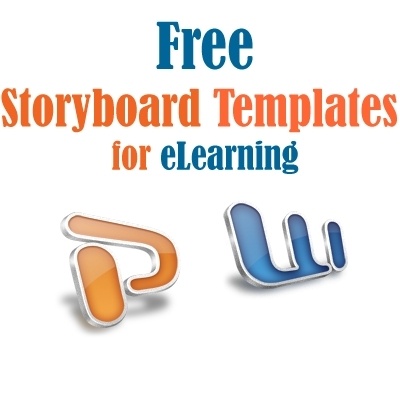How To Overcome 7 Top Challenges When Working With eLearning Templates
eLearning templates are ideal for rapid eLearning course development, as they can be reused time and again. This allows your eLearning team to reduce costs, maximize resources, and ensure consistency across the board. However, these templates do NOT guarantee an infallible eLearning course design. In fact, there are a multitude of things that can go wrong. Here are the top 7 challenges that you might face when working with eLearning templates, as well as tips on how to avoid them.
1. Creating A Navigational Flow
eLearning navigation can be tricky. You want to include creative icons, buttons, and graphics. However, you still need to keep things simple and straightforward to prevent learner confusion. As such, you must strike a balance. This also applies to the navigational flow of your eLearning course. How are online learners going to progress through the eLearning course? Are you going to follow a linear format? Or do they have the opportunity to pick-and-choose the next eLearning activity or module? Make eLearning navigation one of your first priorities. Add all of the buttons and icons as placeholders, and choose the best structure based on the subject matter and online learners' preferences.
2. Choosing The Ideal Number Of eLearning Templates
In a perfect world, you could create one eLearning template for every eLearning course and then simply switch out the eLearning content. Unfortunately, you will have to design different versions for different audiences and training topics. For example, you'll require a new template for your gamified sales online training course versus your company policy online training course. This is due to the fact that they have a different tone and message. As such, the colors, fonts, and overall theme must be adjusted accordingly. Create a list of the eLearning courses, modules, or activities you need to develop. Then break them into different categories based on subject matter, objectives, and learning needs. This allows you to determine how many eLearning templates you require. For instance, you can use one eLearning template for all of your sales online training courses.
3. Picking The Right Aesthetic Elements
Your visual elements must meet a certain criteria. Firstly, they have to be versatile so that they can mesh with different topics and eLearning materials. For example, the font types for your headers should convey the ideal tone, but still remain neutral. Otherwise, they may clash with the subject matter and create confusion. Your aesthetics must also grab their attention without being controversial or off-putting. This is where audience research comes into play. You have to know as much as possible about your online learners, such as their backgrounds, needs, and expectations. This allows you to choose aesthetic elements that enhance the benefits of your eLearning course and remove unnecessary distractions.
4. Overlooking Major Mistakes And Glitches
Mistakes are never a good thing. However, they are even more time consuming when eLearning templates are involved. This is because a minor mistake or glitch is multiplied. Every eLearning course you create using that eLearning template will contain that error. As such, you must go back and revise every eLearning course in order to remedy the issue. Fortunately, you can avoid this costly process by simply proofreading and editing your original template. Ask various members of your eLearning team to review the eLearning template to ensure that nothing has been missed, and conduct a test round with online learner focus groups to catch any last minute errors.
5. Lack Of Online Learner Data
You are creating your eLearning course for your audience. Therefore, every aspect of the eLearning template should cater to their personal needs, preferences, and goals. LMS metrics, website stats, and surveys are just some of the Big Data resources at your disposal. Knowing your online learners gives you the power to create a personalized eLearning template that caters to their learning preferences and meets their expectations. It also allows you to choose the best color scheme, font, and interactive elements.
6. Knowing How Many Placeholders To Include
You don't want to waste time creating more placeholders than necessary. On the other hand, a shortage of placeholders can cause time delays in the future. For example, you must add additional placeholders to your eLearning course design to accommodate a branching scenario. This throws off your entire eLearning template and may force you to start from scratch. For this reason, it's always better to be safe than sorry and leave space for last minute eLearning materials. It's much easier to delete placeholders than to add them into your layout. Another tip is to create detailed notes for other eLearning team members. Clearly state what belongs in each placeholder, such as which images or text your Graphic Designer should include.
7. Finding The Best Tool For The Task
An eLearning authoring tool gives you the ability to create eLearning templates in a fraction of the time. But how do you find the best eLearning authoring tool for the job? Ideally, you should look for a tool that features an asset library, layouts, and themes. This allows you to draw on existing resources without having to search for third-party assets. The eLearning authoring tool must also align with your eLearning team's skills and strengths. For instance, it may feature more advanced graphic design functions, but your eLearning team lacks the experience to use them. Research your tool options and the talents of your eLearning team to find the best eLearning authoring tool for the task.
These 7 tips can help you achieve all the eLearning template benefits without having to endure the downsides. In fact, you may even want to share this article with your eLearning team before you start the eLearning design process. It can help you avoid potential problems and make the most of your online resources, which leads to more effective eLearning experiences.
Are there are any other obstacles you should be aware of? Read the article 7 Common Challenges Rapid eLearning Developers Must Overcome to discover the most common challenges that rapid eLearning developers must face.







